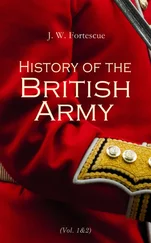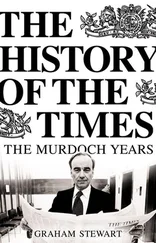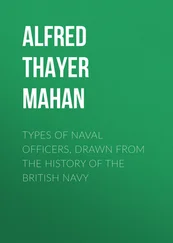J. Fortescue - The History of the British Army
Здесь есть возможность читать онлайн «J. Fortescue - The History of the British Army» — ознакомительный отрывок электронной книги совершенно бесплатно, а после прочтения отрывка купить полную версию. В некоторых случаях можно слушать аудио, скачать через торрент в формате fb2 и присутствует краткое содержание. Жанр: unrecognised, на английском языке. Описание произведения, (предисловие) а так же отзывы посетителей доступны на портале библиотеки ЛибКат.
- Название:The History of the British Army
- Автор:
- Жанр:
- Год:неизвестен
- ISBN:нет данных
- Рейтинг книги:4 / 5. Голосов: 1
-
Избранное:Добавить в избранное
- Отзывы:
-
Ваша оценка:
- 80
- 1
- 2
- 3
- 4
- 5
The History of the British Army: краткое содержание, описание и аннотация
Предлагаем к чтению аннотацию, описание, краткое содержание или предисловие (зависит от того, что написал сам автор книги «The History of the British Army»). Если вы не нашли необходимую информацию о книге — напишите в комментариях, мы постараемся отыскать её.
The History of the British Army — читать онлайн ознакомительный отрывок
Ниже представлен текст книги, разбитый по страницам. Система сохранения места последней прочитанной страницы, позволяет с удобством читать онлайн бесплатно книгу «The History of the British Army», без необходимости каждый раз заново искать на чём Вы остановились. Поставьте закладку, и сможете в любой момент перейти на страницу, на которой закончили чтение.
Интервал:
Закладка:
It was not to be expected that the Swiss should long enjoy their monopoly as the infantry of Europe without exciting competition. In the last quarter of the fifteenth century arose the rivals who were to wrest their supremacy from them, namely, the landsknechts of Swabia, or as the contemporary English called them, the lance-knights of Almain, who were the direct forerunners of the modern German infantry. The records that survive of them are very full, and as it was through them that the teaching of the Swiss was carried into England, with results that are visible to this day, a brief study of their history is essential to the right understanding of the history of our own army.
The Swabian infantry was called into existence by the imperative necessity for preventing any potentate who might be so fortunate as to enlist the Swiss, from dictating his will to Europe. Swabia being the province next adjoining Switzerland was not unnaturally the first to learn the methods of her neighbour; and though at first all fighting men who imitated the tactics and equipment of the mountaineers were known by the generic name of Swiss, yet the Swabians, as if from the first to point the distinction between them and their rivals, took the name of landsknechts, men of the plain, as opposed to men of the mountains. Maximilian the First, seeing how valuable such a force would be in the eternal contest of the House of Hapsburg against the House of Valois, more particularly since the Swiss were the firm allies of the French, gave them all possible countenance and encouragement; and very soon the landsknechts grew into one of the weightiest factors on the battlefields of Europe. Though mercenaries like the Swiss and the still earlier bands of Brabançons, and as such engaged on all sides and in all countries, they yet cherished not a little national sentiment; and the greatest of all their work was done in the service of the Empire.
When therefore the emperor needed infantry he issued a commission to some leader of repute to enlist for him a corps of landsknechts. The colonel[46] thus chosen thereupon selected a deputy or lieutenant-colonel and captains[47] according to the number of men required, and bade them help him to raise his regiment. Then the fifes and drums were sent into the district, with a copy of the Emperor's commission, to gather recruits. The recruits came, gave in their names and birthplaces to the muster-master, were informed of the time and place of assembly, and received a piece of money,[48] conduct-money as the English called it, to pay the expense of his journey thither and to bind the bargain. Here we draw a step closer to the Queen's shilling. At the assembly the men were formed in two ranks, facing inwards. An arch[49] was built by planting two halberds into the ground and laying a pike across them, and then every man passed singly beneath it under the eye of the muster-master and of his assistants, who watched every one sharply, rejecting all who were physically deficient or imperfectly armed, and above all taking care that no man should pass through twice, nor the same arms be shown by two different men. For captains were still unscrupulous, and were ever striving to show more men on their roll than they could produce in the flesh, and put the pay that they drew for them into their own pockets. So old was the trick and so deep-rooted the habit, that even in Hawkwood's bands the legitimate method of increasing a captain's pay was to allow him a certain number of fictitious men, called mortes payes (dead heads), and permit him to draw wages for them. This practice in a legitimised form continued in our own army within the memory of living men.
Four hundred men was the usual number assigned to a company[50] of landsknechts, but there was as yet no certainty either in the strength of companies themselves or in the number of them that were comprised within a regiment. The muster[51] over, the men formed a ring round the colonel, who read aloud to them the conditions of service and the rate of pay, including under the former all the ordinary points of discipline. The men thereupon raised their hands, and with three fingers uplifted, swore by the Trinity that they would obey. The colonel then called into the ring the officers whom he had selected to be ensigns,[52] and delivered to each the colour of his company, exhorting him to defend it to the death. Nor must it be supposed that the ensign was then the beardless boy with which our own later experience has accustomed us to identify the title. He was rather a hardened, grizzled old warrior, who could be trusted at all critical times to rally the men around him. Pursuant to Oriental tradition, the fife and drum of each company were under the ensign's immediate orders, so that the position of the colour might always be known by sound if not by sight. The flag itself, which gave the officer his title, bore some colour or device chosen by the colonel, and among the landsknechts was always very large and voluminous, probably to contrast with the flags of the Swiss, which were the smallest in Europe. The landsknechts prided themselves on the grace and skill with which they handled these huge banners, and indeed all the dandyism (if the term may be allowed) observable in later years in the manipulation of the colour may be traced to them.
This ceremony over, the various companies separated and formed each a distinct ring round its captain and ensign. The captain then selected his lieutenant,[53] and calling him under the colours bade the men obey him. He then chose also his chaplain and quartermaster, and having added to these a surgeon his patronage was exhausted. The men were then handed over to the senior non-commissioned officer,[54] a very important person, who was responsible for all drill and for the posting of all guards, and received his appointment directly from the colonel. Under his guidance the company elected a sergeant, who then in turn selected himself an assistant;[55] the assistant then chose a reconnoitrer,[56] and the reconnoitrer a quartermaster-sergeant. Finally, the company was distributed into files[57] of ten men apiece, which selected each of them a file-leader,[58] who, though he received no extra pay, enjoyed certain privileges within his file, such as the right to a bed to himself in quarters and the like. With his election, the file being the unit of the company, the hierarchy was complete.
It is unnecessary to trouble the reader with a list of the regimental staff, but a word must be said of the provost. His principal function was the maintenance of discipline, for which purpose he was provided with a staff of gaolers and an executioner, and his title is still attached to the same duties in the English army of to-day. But apart from this, it was his office to fix the tariff of prices of goods sold by the sutlers who accompanied the regiment. It was a most difficult and dangerous duty, for if he fixed the price too high the men became discontented and mutinous, and if too low the sutlers deserted the camp and left it to provide for itself, which was an alternative little less formidable than the other. In consideration of the perils of his office the provost received certain perquisites in addition to his salary, such as the tongue of every beast slaughtered and an allowance for every cask broached, and even so was none too well paid.[59] It is hardly necessary to point out that in this commercial side of the provost's duties there lies the germ of our modern canteen, wherein the practice of taking perquisites, though strictly forbidden, still prevails among canteen-stewards.
The duties of another officer, whose name must be written down in the original, the Hurenweibel , show the early methods of coping with a difficulty which particularly besets our Indian army. Every regiment of landsknechts was accompanied by a number of followers on the march; and although by strict rule no woman was allowed to accompany a man except his lawful wife, yet we hear without surprise that there were many women following the colours whose status was not recognised by the rule above referred to. The poor creatures led a hard life. The washing, cooking, scavenging, and all manner of unpleasant duties, as well as the more congenial task of nursing the sick and wounded, was entrusted to them, and in case of a siege they were required to make the fascines and gabions. Their masters treated them very brutally, and as every colonel naturally wished to cut down their numbers as low as possible, no pains were spared to make their lives a burden to them. Over all this rabble the Hurenweibel was king, the sceptre of his office being a thick stick called a "straightener,"[60] which he used unmercifully. Yet these followers loved the life and tramped after their lords all over Europe, increasing their numbers as they went; the boys as they grew up being employed to carry the men's weapons or harness on the march. Such boys, or rather fags, were called in French goujats , and are a curious feature in the armies of the time. The greatest of all goujats , if legend may be trusted, was Thomas Cromwell, the Hammer of the Monks.
Читать дальшеИнтервал:
Закладка:
Похожие книги на «The History of the British Army»
Представляем Вашему вниманию похожие книги на «The History of the British Army» списком для выбора. Мы отобрали схожую по названию и смыслу литературу в надежде предоставить читателям больше вариантов отыскать новые, интересные, ещё непрочитанные произведения.
Обсуждение, отзывы о книге «The History of the British Army» и просто собственные мнения читателей. Оставьте ваши комментарии, напишите, что Вы думаете о произведении, его смысле или главных героях. Укажите что конкретно понравилось, а что нет, и почему Вы так считаете.












